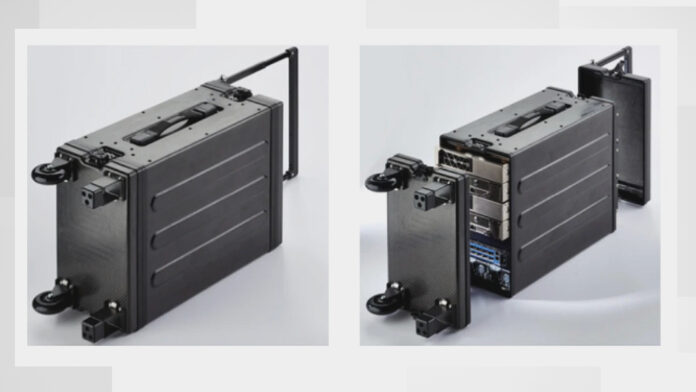In sum – what to know
Carry-on AI – new Gryf system from GigaIO delivers AI compute power in a portable form, designed for edge deployments across defense, sports, media, energy, healthcare, and industrial sectors.
DOD demand – reported sales to the US Department of Defense and intelligence community reinforce its claim about potential value in mission-critical operations that require modular AI in minutes.
Industrial edge – emblematic of the edge AI trend where AI infrastructure gets more mobile and modular, and mission-driven needs accelerate practical innovation around AI architectures and deployment.
California-based AI infrastructure specialist GigaIO has released a “suitcase-sized AI supercomputer” for edge AI operations, targeted at the industrial sectors like defense and intelligence, sports analytics, media production, oil-and-gas exploration, industrial manufacturing, and medical research. It has already taken “significant orders” for the product, called Gryf, from the US Department of Defense, as well as the “intelligence community”, it said.
These early orders “validate” its “capabilities for mission-critical applications in challenging environments”, the company said. GigaIO’s whole pitch is about flexible and scalable small-footprint AI compute power to serve rising demand for AI applications to run at the edge, whether for reasons of latency or data management, as well as to serve temporary or moveable field-type scenarios with modular compute systems
In the end, its sweet spot is where these two demands cross over – as per the DOD business. Designed with Massachusetts-based high-performance computing (HPC) hardware provider SourceCode, the Gryf system is presented as the “world’s first suitcase-sized AI supercomputer”, providing “datacenter-class computing power directly to edge operations”. In its marketing, GigalO promises modular AI infrastructure “in minutes, not months”.
The product is emblematic, to an extent, of the edge AI trend where AI infrastructure gets more mobile and modular, as the demand to process AI workloads moves closer to the edge, where data is generated. In turn, this practical demand is driving innovation around AI set-ups. Gryf promises to make serious AI horsepower portable and field-ready – for use cases that will not permit long setup times or permanent infrastructure facilities.
GigalO’s marketing reads: “Gryf redefines on-demand configurability in the field. Powered by GigaIO’s AI memory fabric, Gryf enables users to dynamically deploy applications anywhere, at any time. The revolutionary computing platform allows organizations to process critical data on-site without latency issues from data transfers, providing unprecedented computing power in a ruggedized, field-ready design that can be deployed virtually anywhere.”
The Gryf product combines a graphics processing unit (GPU) with, compute, storage, and network ‘sleds’ (core network servers). It allows users to stack up to five portable server units for higher performance. “[These] interconnect across GigaIO’s AI fabric, allowing any server to access any resource within the fabric as if it was on a single node. This configuration can be adjusted in real-time to meet changing application requirements,” said GigaIO.
Alan Benjamin, chief executive at GigaIO, said: “By bringing supercomputing capabilities to field operations in a portable form factor, we’re enabling real-time intelligence and analytics that were previously impossible without massive infrastructure. The strong interest from defense, intelligence, sports, media organizations, and the energy sector confirms the market need for this revolutionary approach to edge computing.”
The product is US-made, the company noted – helping it to gain traction within the defense and intelligence sectors in the US to support “mission-critical workloads at the tactical edge”. It is optimized for intelligence surveillance reconnaissance (ISR), cybersecurity, and tactical missions – variously threaded with AI, as required. It integrates with GigaIO’s SuperNODE platform to be able to “operate autonomously and synchronize instantly” with cloud services.
It stated: “This capability ensures continuity of operations across the disconnected, intermittent, and limited bandwidth environments common in defense operations.” As well, it highlighted its value for sports analytics at training sessions and live venues, as well as media production workflows for live broadcasting, including such events (“ outdoor venues with challenging high-speed connection points, such as race tracks and sports stadiums”).
Besides, it recommended its product for remote and rugged operations, such as offshore drilling rigs and overland exploration sites where power and network support are limited – to “act faster, improve safety, and maintain control over sensitive information”. Otherwise, its application is valuable in healthcare (for edge-based “diagnostic analysis and patient-critical decisions”) and industrial and manufacturing operations (based on its “factory-ready” design”).







